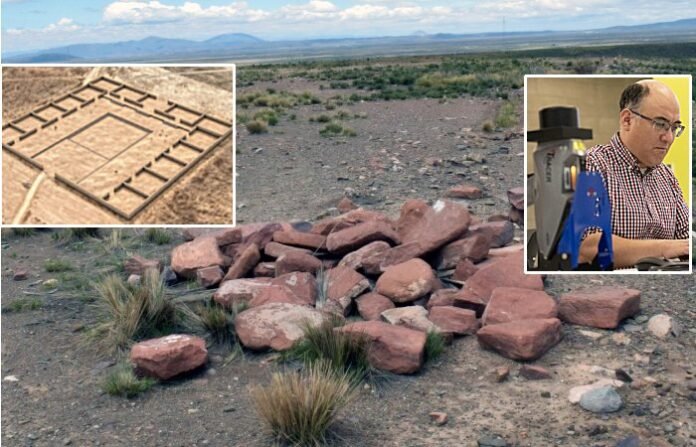Conny Waters – AncientPages.com – An ancient society located near the southern shores of Lake Titicaca in present-day Bolivia, known as Tiwanaku, was once among the most influential civilizations on the continent.
The surface of the temple contained numerous fragments of keru cups. The cups were used for drinking chicha, a traditional maize beer, during agricultural feasts and celebrations and point to the temple’s function as a central hub for trade. Credit: José Capriles / Penn State. Creative Commons
Archaeologists consider Tiwanaku as one of the earliest examples of civilization in the Andes and a precursor to the Inca Empire. However, this civilization mysteriously vanished approximately a thousand years ago.
Now, a team of researchers, led by scientists from Penn State and Bolivia, has uncovered a Tiwanaku temple, offering significant insights into the society during its peak. José Capriles, an associate professor of anthropology at Penn State and the principal author of a study detailing this discovery, noted that much about the Tiwanaku civilization remains enigmatic.
According to Capriles, the society experienced a collapse around 1000 CE and was in ruins by the time the Incas conquered the Andes in the 15th century. At its height, this civilization was characterized by a highly organized societal structure, as evidenced by architectural remnants such as pyramids, terraced temples, and monoliths.
José Capriles, Penn State associate professor of anthropology, was a lead author on a study about the temple discovery. Credit: Patrick Mansell / Penn State. Creative Commons
These structures are primarily found at sites around Lake Titicaca. Although it is known that Tiwanaku’s influence extended far beyond this region, there is ongoing scholarly debate regarding the extent of its actual control over distant areas.
The newly discovered temple complex is situated approximately 130 miles south of Tiwanaku’s well-known historical site, atop a hill familiar to local Indigenous farmers.
Stone alignments revealed an ancient temple, called Palaspata after the native name for the area. The temple complex is approximately 125 meters long by 145 meters wide — about the size of a city block — and includes 15 quadrangular enclosures arranged around a rectangular inner courtyard. This is a digital reconstruction of the temple. Credit: José Capriles / Penn State. Creative Commons
Despite its modest appearance, researchers had not previously explored it in depth. However, according to Capriles, the site’s location is strategically significant. During the Tiwanaku period, this spot served as a junction for three major trade routes connecting distinct ecosystems: the fertile highlands around Lake Titicaca to the north, the arid Altiplano suitable for llama herding to the west, and the agriculturally rich eastern Andean valleys of Cochabamba to the east.
The area was important for connecting people who migrated, traded and built monuments in places, which were for them of significant value.
The team used various satellite images together,” Capriles said. “We also conducted a series of UAV, or unmanned aerial vehicle, flights to acquire better pictures of the landscape.
Stone alignments revealed an ancient temple called Palaspata. The complex, approximately the size of a city block, measures 125 meters by 145 meters and features 15 quadrangular enclosures surrounding a rectangular courtyard.
The temple’s layout seems aligned to perform rituals following the solar equinox, the moment when the sun is directly above the equator. Using data they collected, the researchers developed a reconstruction to reveal what the ancient temple might have looked like. Credit: José Capriles / Penn State. Creative Commons
Its layout seems aligned for equinox rituals when the sun is directly above the equator. Researchers used the collected data to reconstruct how the temple might have looked.
According to Capriles, the temple’s surface was adorned with numerous fragments of keru cups, which were traditionally employed for consuming chicha, a maize-based beer, during agricultural feasts and celebrations. This evidence underscores the temple’s pivotal role as a center for trade. Furthermore, the cultivation of maize in the Cochabamba valleys rather than at the high-altitude location of the temple underscores its significance in facilitating access to diverse goods, including foodstuffs, and in bridging various culinary traditions.
The temple discovered in the municipality of Caracollo, likely had a religious purpose, as indicated by the ritual areas and its role in mediating trade and distributing harvests.
Capriles observed that many economic and political transactions historically required mediation through divinity, as religion often served as the shared language that enabled diverse individuals to collaborate. This common ground of faith provided a unifying framework for different groups to connect and work together effectively.
Written by Conny Waters – AncientPages.com Staff Writer










